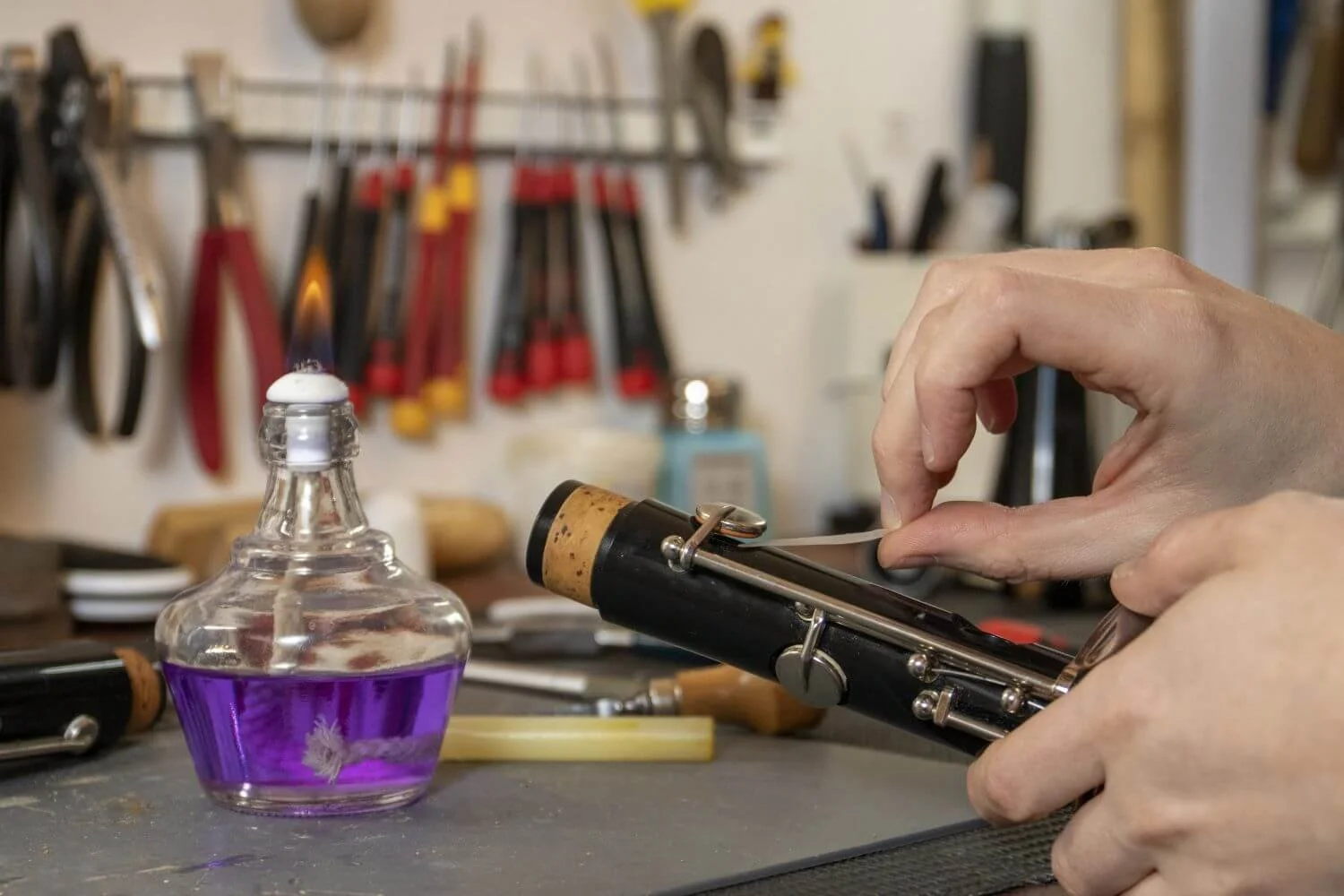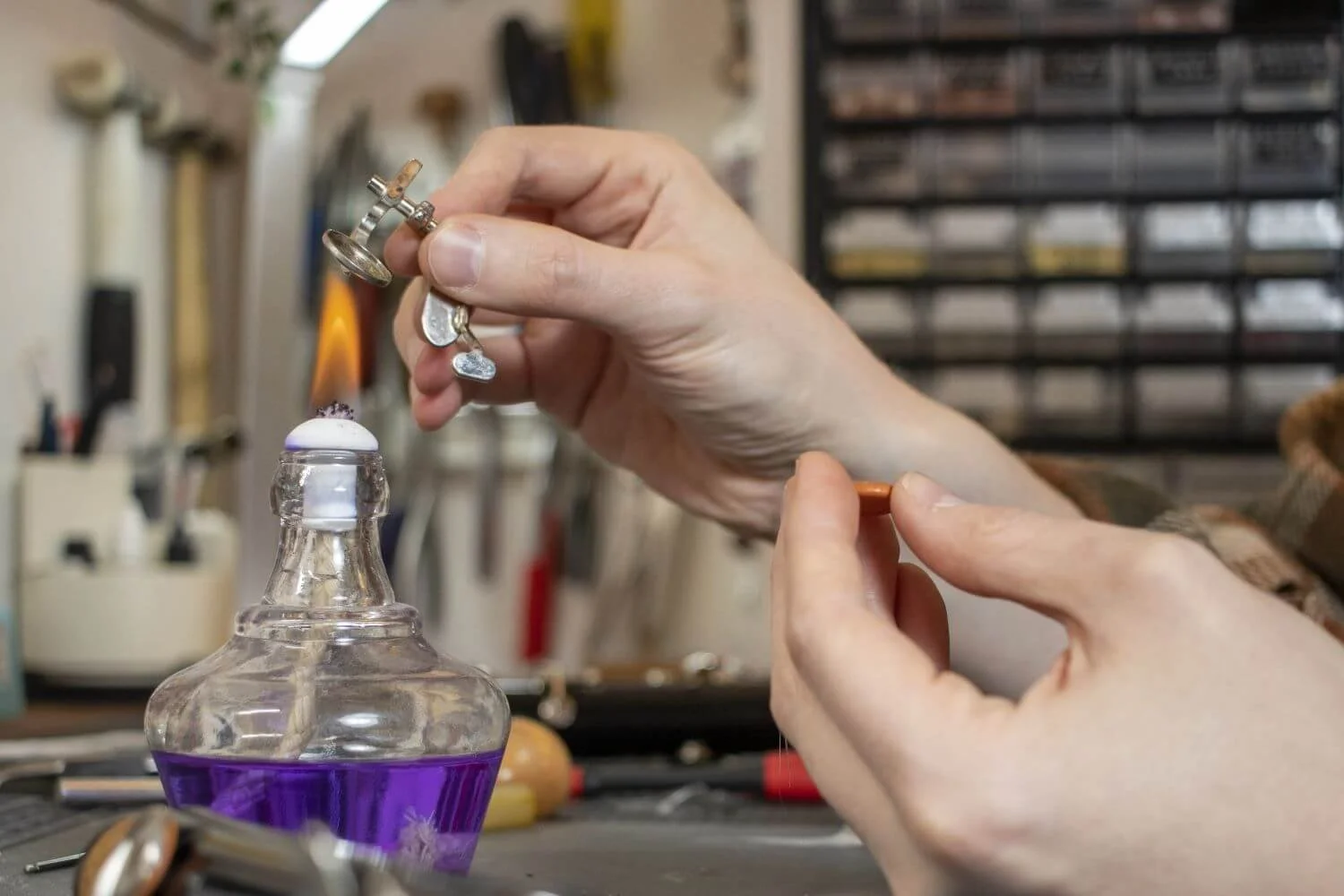How Are Clarinet Repairs Assessed & Quoted?
Once you have been booked in to have your clarinet looked at, we will also provide you with a rough ballpark figure on some of the potential costs you can expect. These quotes will of course be subject to change once the instrument has been assesses in person. And do not include parts.
Clarinet Clean and Oil:
How often does a clarinet need cleaning?
Most clarinets are made from a combination of wooden or plastic bodies with metal keys plated in silver. Through play debris can build up on the inside of the tone holes and bore, although small, these deposits can effect the sound of the instrument. As well as this the silver plating on the keys can become tarnished, and the oil within the mechanism begins to congeal.
Our strip down service involves removing all the key work, thoroughly cleaning the body, polishing up the keys, and replacing the key lubricants. Included in this we will also oil the bore of the body which helps hydrate the wood and and improve the longevity / tone of the instrument.
Clarinet Key Regulation:
When should you adjust clarinet keys?
In order for the clarinet to perform as it should, there are multiple sets of keys that need to combine/operate at the correct time. These can sometimes come out of alignment when the instrument is dropped, knocked or just over time from tightly gripping the instrument while it is put together.
We will either quote for replacing felts/corks that have come loose and worn down, or for straightening bent key work.
Clarinet Pad Replacement:
When do clarinet pads need replacing?
The Pads on a clarinet provide an air tight seal for the keys as they are pressed or until the moment they are opened. Most pads are made from a combination on Card, Felt, Leather or synthetic materials.
During the assessment we will check all pads to ensure they are sealing evenly with a light touch. Generally speaking clarinets pads have a life of around 4 years of regular use, However there are certain pads on the clarinet that wear much quicker and levels of humidity and frequency of cleaning may effect this.
Clarinet Tenon Corks:
When is it time to change clarinet tenon corks?
There are a total of 4 tenon corks on most clarinets which form an airtight seal between the parts of the clarinet once assembled. They should fit together tightly without any lateral movement once fully fitted. Even a small movement may allow moisture to get in which will effect response of the instrument.
We can either replace individual tenon corks as needed, or replace them all as part of an overhaul/full service.
Clarinet Crack Repairs:
What causes clarinet cracks?
Most intermediate to advanced level clarinets are usually made from hard a African Blackwood like Grenadilla. This means it can be prone to developing cracks and splits as the wood expands and contracts with the changing climates.
To avoid this it is best to keep them stored at as stable a climate as possible, with close attention paid to humidity and temperature.
If the crack is only small and does not go completely through the bore, it can be filled with a combination of a quick setting adhesive and grenadilla dust, this is then sanded and buffed to match the original finish. If the crack is deeper it will need to be reinforced with either a steel pin or carbon fibre bands.
Common Issues:
What are some common issues with clarinets?
Low E/B key adjustment
The Low B/E keys on the clarinet have to work very precisely, there are also multiple mechanisms at play in for each key that is being operated which makes it more prone to issues as if just one part if off it won’t play correctly.
Bridge Key Adjustment
The bridge key is the small lever that crosses over from the top joint to the bottom, it is responsible for long Eb and also the regulation between the right and left hand ring keys. If it gets bent or the small pieces of regulation cork/felt perish it can become an issue that effect many notes on the instrument.
Broken springs:
There are several springs on the clarinet which operate single keys or groups of keys, they take the form of both flat and needle style springs.
Broken Springs are common on older instruments where rust has been allowed to develop, or years of use has weakened the metal.
Clarinet Repair Guide Prices
All prices are subject to assessment and do not include parts costs
Individual Repair £25 - £50
New Tenon Cork £35
Crack Repairs £50 - £90
Clean Oil and Adjust £85
Service Including Up to 3 new Pads £120
Full Re-Pad £250




